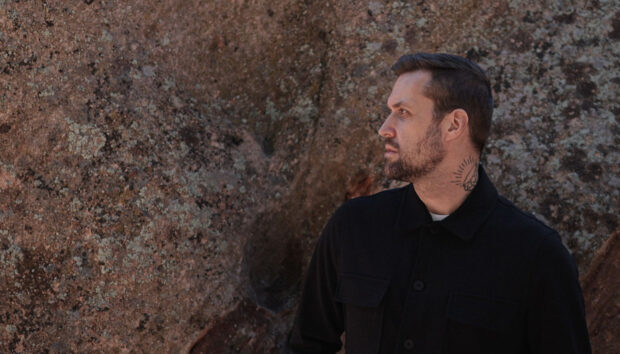For almost a decade, developer Strezov Sampling has sat at the apex of sampling orchestral sections, ethnic instruments and voices. Their uncompromising approach to sampling authentic performances has inspired scores of musicians. You’ll find their KONTAKT instruments gracing the templates of thousands of professional composers – and now they’re also available to buy directly from our NKS shop. To mark the occasion, we caught up with the developer’s namesake George Strezov who reveals how he creates these magical libraries and offers us some pro tips and tricks for choral composing.
You’ve sampled some very unusual voices over the years. Do you have any particular favourites?
My home country of Bulgaria has such a rich past. Our ancestors come from the region between the Black and Azov seas; the so-called Old Great Bulgaria. It was a land of nomads, famous for their ability to ride horses and shoot bows. About 6 centuries later (when Bulgaria on the Balkan peninsula had already been formed) that same region would be part of the Mongol empire and you can really hear that common heritage in the voices. Compare the throat singing of Wotan to the ethnic voices of The Mongolian Hoomai singers. Or listen to the soloists of Balkan Ethnic Orchestra and the beautiful singers from Jade Ethnic Orchestra. You’ll hear a lot of similarities.
So how do you go about creating a choir sample library?
I have a masters in choral conducting but I’m a composer at heart. Every single one of our Strezov Sampling libraries comes from that viewpoint. I’ll consider the tone and overall sound that I want to achieve. Unique and interesting voices inspire me and I’m looking for singers that haven’t been sampled before and that will also be useful for my personal workflow. For the sessions, we completely trust our partners at Four For Music and the team at Sofia Session Studio. When we were developing Wotan we called them and said, “We need 4 or 5 Basso profundo singers with the lowest and rarest possible human voice.” We can be a pretty demanding client. I have to also point out that the in-house team at Strezov Sampling is also very patient and will happily cater to my wilder ideas.
How does that concept translate to the recording sessions?
We try to have the singers perform just like a regular choir recording session, keeping the human element as much as possible. Sometimes you need to push the musicians to capture material that is at the limits of their vocal range. That’s why we’ve chosen a performance-driven approach from the beginning, cutting samples out of full performances. This maintains the musicality of the samples but still keeps musicians sane after a full day of recording single notes!
I like to think of the human voice as a natural equalizer with countless possibilities.
Is that why your legato playback sounds so realistic?
That’s right. We don’t have our musicians simply sing lifeless note transitions. They’re singing real music. But this is just a small part of the process. We have a great team at Strezov Sampling who work really hard to fine-tune each transition until we achieve a result that inspires us when we sit down and play the instrument. The team here is more like an extended family and sampling is only a part of our lives. Every one of us composes for film, TV or games. We need these instruments and tools to work well, so we put a huge amount of effort into making them as playable and convincing as possible.
What are the differences between composing for real-life choirs vs choir libraries?
Honestly, there’s a massive difference. For example, children’s choirs will need much more time to rehearse and practice. They get tired quickly and will lose their focus after a while. Adult singers have more stamina but even though the human voice is an incredibly nuanced instrument, it’s also very fragile. Real-life performers can change so many aspects of their tone – manipulating the colours of each vowel, making the timbre brighter or darker and as a result creating a completely different interpretation of the music. I like to think of the human voice as a natural equalizer with countless possibilities.
Writing for choirs is a bit of a mysterious artform. Can you give us any pointers?
I find it similar to writing for wind instruments; in both cases the sound is produced by air and you have to make allowances for breathing. If you want to keep things realistic make sure that you take into account what the performers would physically need to do in order to create music. You cannot expect brass players or singers to perform at fff for hours without flagging. There are also certain limitations concerning speed and intonation; no choir could sing fast 16th note tremolos non-stop. Also, the more a singer goes to the extremes of their upper and lower range, the harder it becomes to perform a nuanced sound. A dramatic soprano singing the C two octaves above middle C cannot start at ppp and then gradually increase the volume. I have also found that it is generally harder to get singers or wind players to perform dissonant intervals (sevenths, tritones) or very close intervals such as clusters.
What about voicing the different choir parts?
Whether I’m writing for a choir sample library or real-life voices, I like to give each separate voice part all my love to combat the boredom of performing single lines or “filler” harmonies. Sometimes I even sing a melody or a counter-voice to see how I’d perform it as a musician before writing anything down. The voice is not an instrument with frets or keys where you can easily jump abruptly up and down, so voice leading needs to be consistent and logical note progressions. A good anti-example is the choral music of Bach. I love his work but it’s extremely hard to sing because he often writes from a mathematical point of view. My personal preference has always been to keep the harmony in the male choir as wide as possible, while women typically sing closer intervals. In practical terms, if you have more than two octaves difference between bass, tenor and alto, then you won’t get a balanced sound and you might have intonation problems.
There is no right or wrong answer here, it is all about artistic choices if the overall aesthetic feels right.
Live choirs can balance their voices in real-time. How do you achieve something like that with virtual choirs?
Our scripter Alex Koev has always been brilliant at finding logical solutions to my sometimes crazy ideas, and this is a great example: We tried to give a solution to this problem within our library functionality, with a feature called Velocity Dynamic Influencer. You can change the volume of a single note separately from the main modwheel volume controller. This can help you bring out inner voices in polyphonic legato mode. For example, with a chord you can decrease the third or fifth interval to make it more stable and focus on the fundamental, just like real singers.
What type of voices are more suitable for different genres of music?
Style and genre often dictate the way you should write for voices, depending on whether you need boombastic music or something much smaller. For example, our Storm Choir Ultimate library is great for epic trailer tracks but less useful for something more intimate. Ethnic choirs can make fantasy music shine, but you might also consider them for more contemporary songwriting. There is no right or wrong answer here, it is all about artistic choices if the overall aesthetic feels right.
As an orchestrator, how do you go about reinforcing voices with other orchestral instruments?
I always try to double the choir with something from the orchestra, especially with legato lines so that the singers have support; overlaying violins with female choirs or celli with male singers. For an epic and powerful sound, trombones can be doubled with male parts. You can also try brass and wind stabs with choir fx and clusters. A classic technique for angelic voices is to mix a children’s choir with high violins and celesta.
Do you have any tips for processing choir parts?
Mostly I keep it simple, using subtractive EQ at around 3 kHz. This helps to combat that nasty “whistling” sound that can build up. With the men I sometimes clean up at around 200 Hz to make the low end less boomy. In fact, I often cut the low end completely unless the singers are exposed as an acapella part. In general, just remember that the aim is to make choirs sound as smooth as possible and place them into a decent space by using a nice reverb.
Which voices would you love to sample but haven’t yet had the chance?
I’d love to capture an ensemble like The King’s Singers, The Swingle Singers or The Real Group. If you don’t know their work, make sure you check them out as they’re amazing!
Discover more from Strezov Sampling at the NKS shop.















